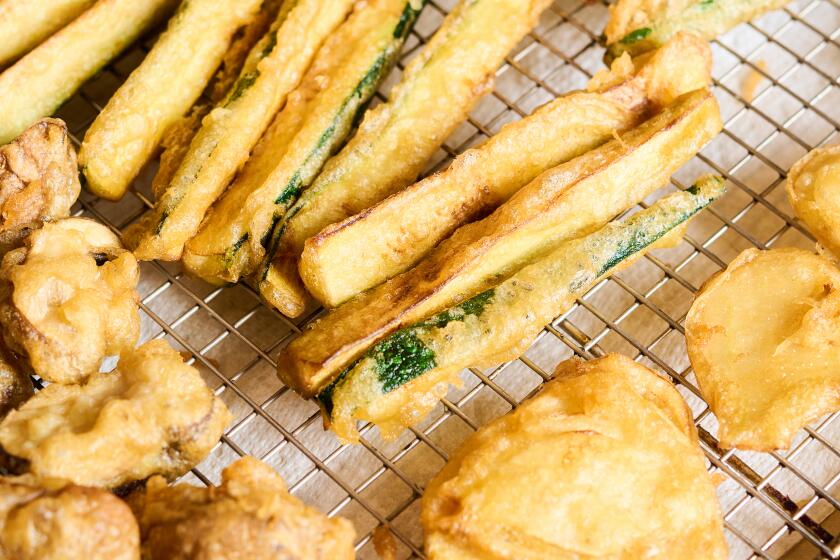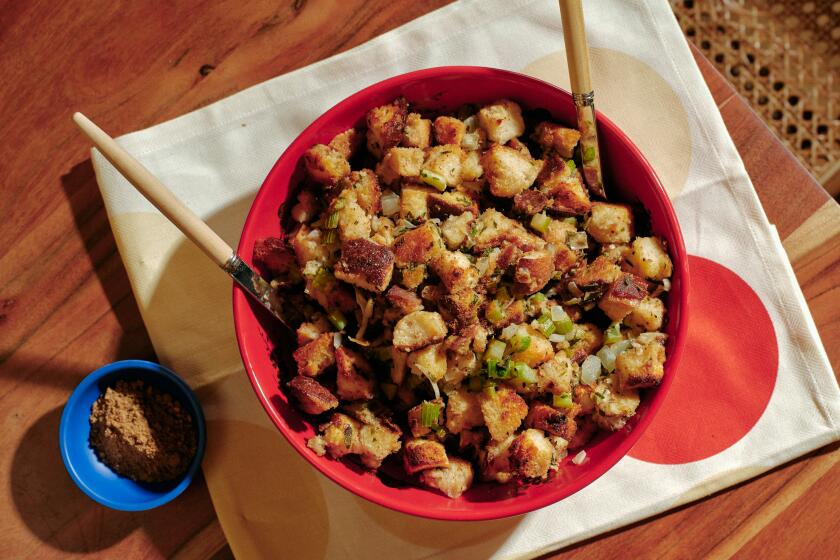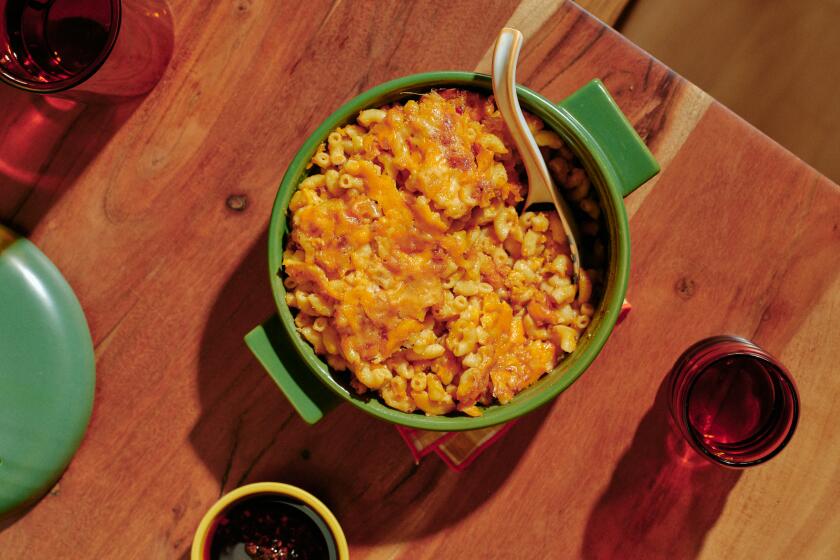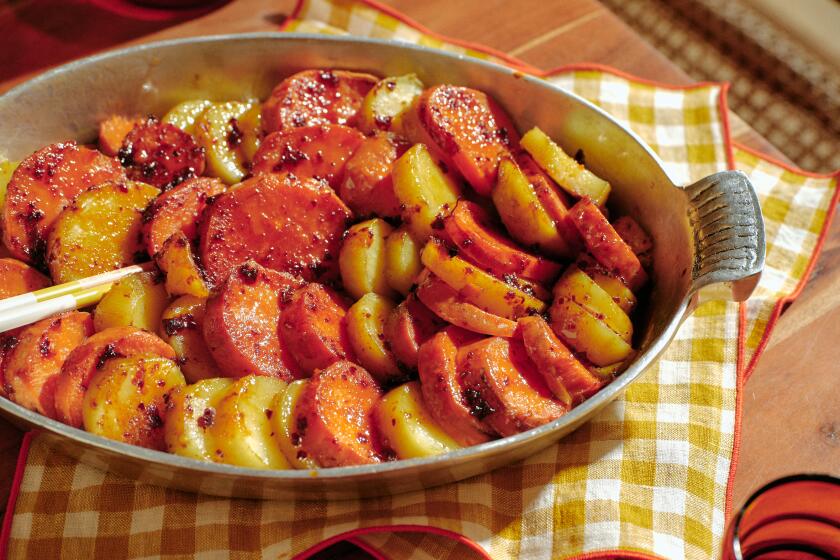Bread dumplings
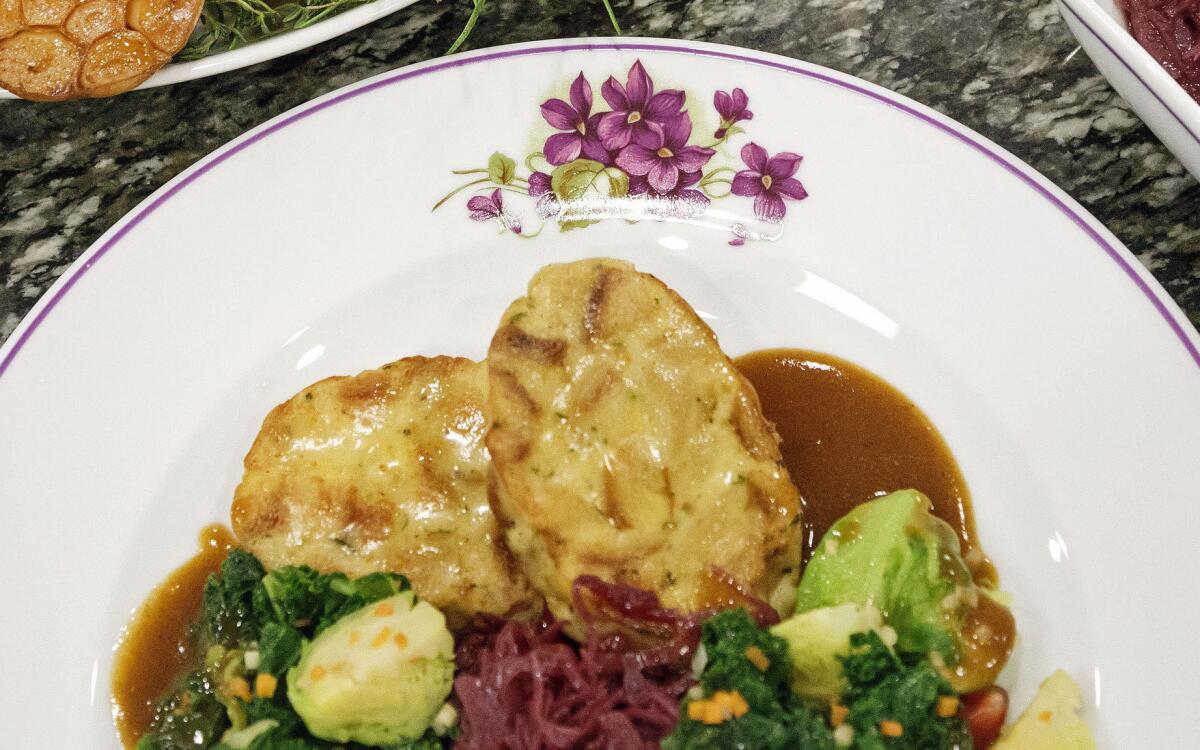
- Share via
With a sly smile, like some mischievous 6-foot-7 Santa Claus, Austrian chef Bernhard Mairinger says he has just dropped off a strudel for L.A.’s best-known Austrian, Wolfgang Puck. Giving a gift of strudel is one of the holiday traditions he still clings to, even though it’s hard to imagine two places more different than Austria and Southern California.
After closing his modern Austrian bistro, BierBeisl, late last year with plans to relocate to the Westside, the barely 30-year-old chef has been free of his grueling day-to-day cooking schedule for the first time in years. Last Christmas, the hiatus allowed Mairinger to go back home for the holidays.
He loves the holidays, he says, and then he proceeds to list the things he enjoys most about celebrating at his village of Nussdorf am Attersee in upper Austria. Population: 1,000.
First of all, there’s snow. And starting the first week of December, little stands are set up outdoors to serve glühwein (warm, spiced wine) and roasted chestnuts. Usually, he says, you go with friends after church and meet at the glühwein stand. “It’s so good standing around in the snow drinking hot wine, which is spiced with sugar, cinnamon, cloves, allspice and apple. And roasted chestnuts? That’s my favorite way to eat them, just out of the shell.”
By mid-December, the outdoor Christmas markets, where you can buy hand-carved wooden animals and nativity figures, are going up. The biggest one in the region is in Salzburg. You drink more glühwein and also eat bauernkrapfen, warm pan-fried doughnuts dusted with powdered sugar or stuffed with jam. They’re made with a light brioche dough and don’t have a hole. “I could die for those. They’re amazing.”
In Austria, Christmas Eve is the big day, and the tradition is to have a lunch of bratwurst with boiled potatoes and onions. They’re not the usual pork-and-veal bratwurst; they’re special ones that are leaner than usual, made only with veal. It’s meant to be a light lunch, because the big holiday feast is that night, when everyone either eats out or eats at home with family.
For Christmas Eve, Mairinger likes to roast a duck or goose with braised red cabbage and the bread dumplings that function like an extra stuffing to soak up all that rich, redolent gravy. As a first course, he usually serves some kind of soup, especially pumpkin soup garnished with roasted pumpkin seeds and a special iridescent pumpkin seed oil. The best oils come from Styria in southern Austria, he says. “It takes 300 kilos of pumpkin seeds to make one liter of oil.”
In Austria, Christmas almost always involves snow. Here in Southern California, where Mairinger has lived for six years, he likes to have the same menu, even though it doesn’t get that cold.
Because who knows the next time he’ll get a chance to get back home. That long vacation is about to end when his more casual concept and bakery BierBeisl Imbiss opens downtown in the Spring Arcade at the end of February.
Heat the oven to 300 degrees. Spread the cubes on 1 or 2 rimmed baking sheets, and toast until very dry, about 12 minutes. Transfer the bread to a large bowl. Stir in the eggs and parsley until the bread cubes are coated, and set aside.
In a large saucepan, melt the 5 tablespoons butter over medium heat. Add the onion and cook, stirring occasionally, until the onion is softened and lightly colored, 10 to 12 minutes. Stir in the milk, scraping any flavoring from the bottom of the pan, and bring the milk to a boil over high heat. Remove from heat and pour the milk over the bread. Season with 1 teaspoon salt, or to taste, and the nutmeg, and toss well to combine.
Cover and refrigerate the bread until it has soaked up the milk and is softened, about 45 minutes.
Bring a large pot of salted water to boil over high heat. Moisten your hands with cold water, and form the bread mixture into 2- to 2½-inch balls (if the mixture feels a bit dry, add warm milk, a little at a time, and work it into the mixture). Gently add the dumplings (this will need to be done in batches), cover and boil them for 15 minutes, then reduce the heat and leave to poach in the water an additional 10 minutes. Transfer to a serving platter and garnish with chopped parsley, melted butter and chives.
Get our Cooking newsletter.
Your roundup of inspiring recipes and kitchen tricks.
You may occasionally receive promotional content from the Los Angeles Times.












